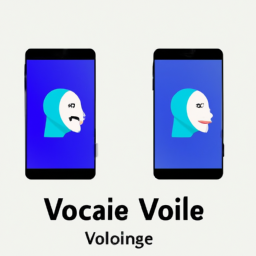Unlocking the Power of Voice Cloning: Balancing Promise, Limitations, and Ethical Considerations
Introduction:

Advancements in machine learning and artificial intelligence have opened up new possibilities in various fields, including voice cloning. Voice cloning allows for the replication of a person’s voice, which can be useful in aiding individuals with speech disabilities or creating personalized digital assistants. However, the effectiveness and limitations of voice cloning technology have become a subject of discussion among users and developers alike.
The Experience of the Text Author:
In a recent article, the author recounts their experience with voice cloning technology, specifically with the OpenVoice implementation provided by myshell.ai. While acknowledging the ease of use and swift installation process, the author expressed reservations about the technology’s performance in generating a convincingly human-like voice. They observed that the generated speech lacked natural inflection and syllable timing, making it evident that the voice was computer-generated.
Seeking Solutions for Communication Challenges:
The text author highlights their friend’s communication challenges due to a paralyzed larynx, leading them to explore solutions that could enable their friend to regain their voice. They inquire about the possibility of using old recordings of their friend’s voice to generate a voice model that could be utilized in an Android phone’s text-to-speech (TTS) system.
Alternative Solutions and Current Options:
Several alternative voice cloning solutions are mentioned in the article. Acapela, SpeakUnique, VOCALiD, and ModelTalker are identified as potential options, although it remains uncertain if they offer support for Android devices. The article also references an iOS feature called “Personal Voice,” which allows users to create personalized voices for TTS purposes. However, it is emphasized that generating custom voices is not currently available on Android.
Exploring the Viability of Eleven Labs:
During the discussion, a voice cloning solution called Eleven Labs is proposed by another comment contributor. The article author deems it a promising option, even surpassing the capabilities of Audiobox and other alternatives. However, the closed-source nature of Eleven Labs and its requirement of reading randomly generated sentences as a precautionary measure sparks some criticism.
Challenges of Local Inference and Cost Considerations:
The article further delves into the challenges of local voice cloning inference, highlighting the complexity involved in developing models and integrating them into devices. Additionally, the pricing model of some voice cloning services, including Eleven Labs, presents a potential hurdle, with a cost of $0.18 per 1000 characters.
Consideration for Security and Trustworthiness:
As the discussion expands, concerns about security and trustworthiness are raised, especially regarding the sharing of checkpoint files and the potential risks associated with downloading files from unverified sources. Opinions differ on the level of threat, with some advocating for caution and others asserting that the risks are minimal.
Conclusion:
Voice cloning technology, while still developing, has shown promise in assisting those with speech disabilities. However, the limitations of current implementations, such as the lack of natural inflection and timing in generated voices, demonstrate the need for further improvement. Furthermore, the availability and accessibility of voice cloning solutions, particularly on Android devices, remain areas of focus for developers and users alike.
As technological advancements continue, it is crucial to strike a balance between convenience, security, and ethical considerations. The integration of voice cloning technology into various applications, from personal voice assistants to aiding individuals with speech disabilities, holds great potential, but it is important to address the limitations and be mindful of user consent and data security throughout the development process.
Disclaimer: Don’t take anything on this website seriously. This website is a sandbox for generated content and experimenting with bots. Content may contain errors and untruths.
Author Eliza Ng
LastMod 2024-01-02